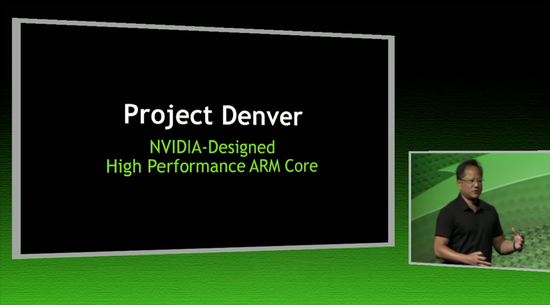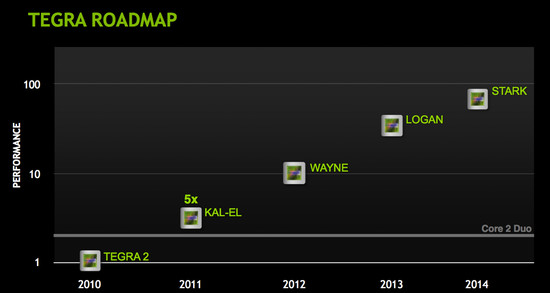It’s been a while since we heard from NVIDIA Project Denver. Denver will sport ARM CPU cores and target the server and super computer market, but also PCs and bring 64-bit support. BSN* now says that Denver will be a very potent architecture.
Project Denver will be NVIDIA’s first serious attempt to cut the ties with AMD and Intel and become more selfreliant. The idea is build a heterogeneous design like AMD’s APUs. Project Denver is something NVIDIA will need in the future since both AMD and Intel will start integrating very potent GPUs into their processors, which could come to eliminate the budget segment of the graphics card market in the future.

The first Denver will leave TSMC’s fabs in December and be based on 28nm. The design comes with eight cores based on ARM, but will be a modified/custom design based on the technology and patent owned by ARM. Besides this we find 64-bit and a GPU of the ”GeForce 600 series” where there is talk about at least 256 CUDA cores. Denver will bring full PhysX support and what that means only NVIDIA knows today.
Denver targets a whole new market segment for ARM and we can only assume NVIDIA will push up the frequencies. NVIDIA has tried to achieve a high IPC (Instruction Per Clock), but we expect clock frequencies of 2.0 to 2.5 GHz. We mentioned earlier that this is a modified processor core or a custom design by NVIDIA that will be used, but it will be either A15 or a design called PD.
When it comes to the memory controller it will be a lot different from the closest related design we can find, AMD Llano. Llano shares the bandwidth between CPU annd GPU, while Denver will handle this differently. NVIDIA will not rely on high cache, and let CPU and GPU communicate over a northbridge/memory controller without connecting CPU and GPU for a high internal bandwidth.

Tegra will live in harmony with Denver and grab other shares of the market
NVIDIA is going all in with ARM, with Denver it has motherboards for notebooks, desktops and servers in the development stage sporting functions like PCI Express 3.0, USB 3.0 and SATA 3.0. When it comes to the ultramobile market like smartphones, tablets and ultrathin (think MacBook Air/Intel Ultrabook) notebooks it will continue with Tegra 3 and the coming Tegra 4 ”Wayne”. NVIDIA will soon get the first samples of Tegra 4 and expects to ship the first prototypes by the end of the year.





















Leave a Reply